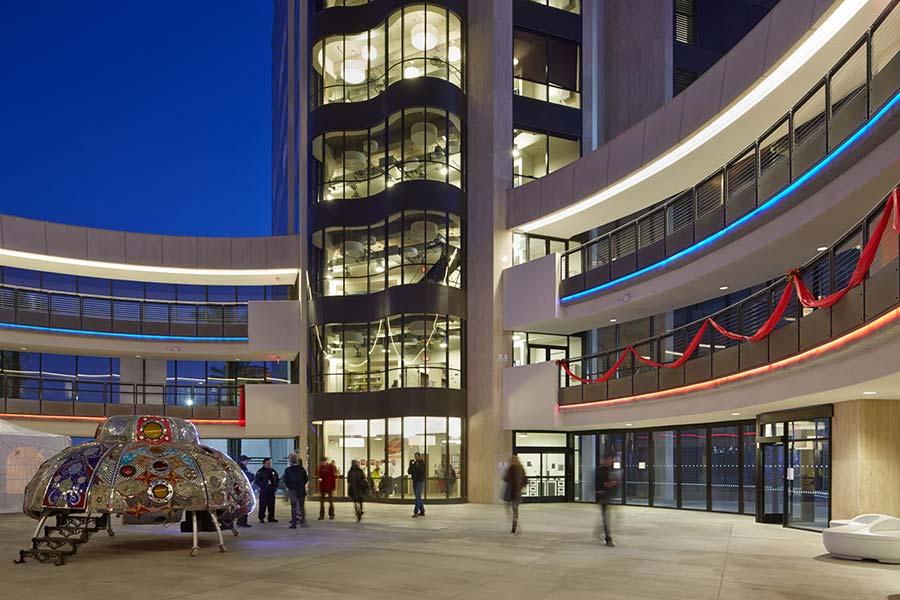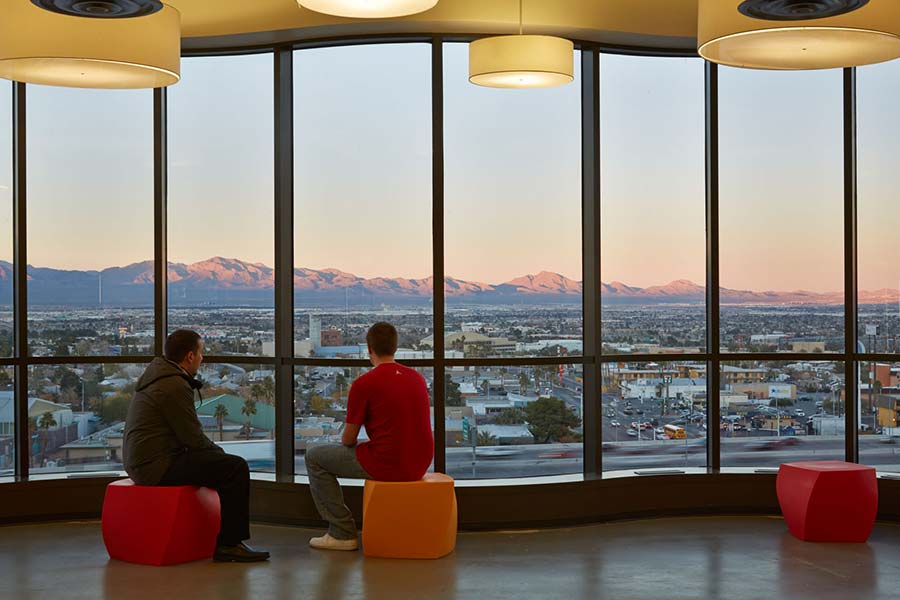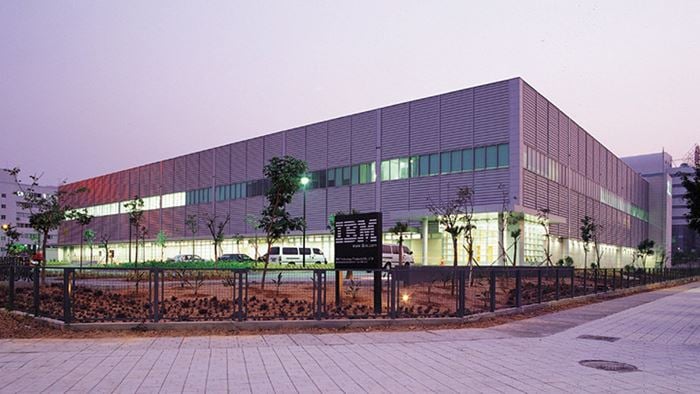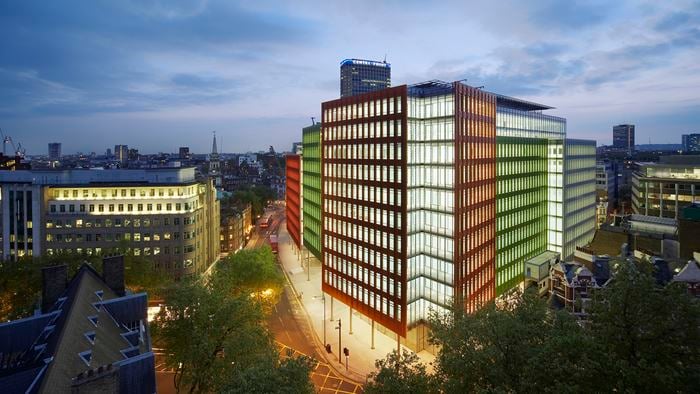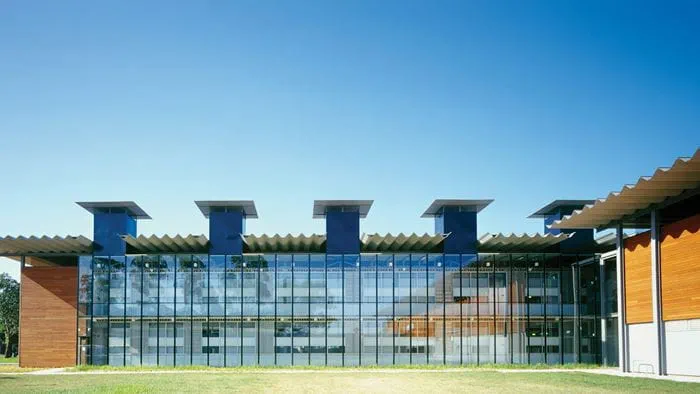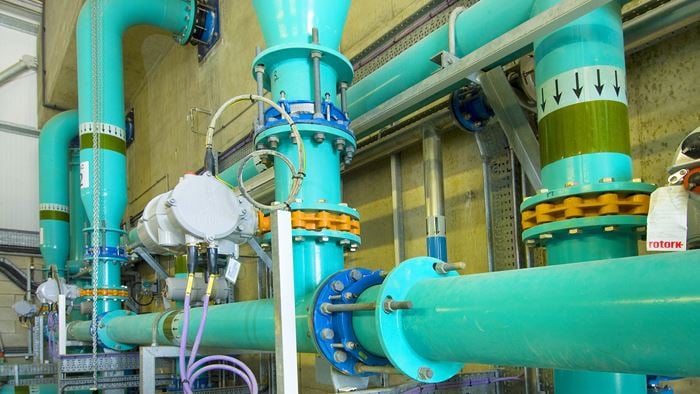The Zappos.com Corporate Campus is a building reuse project located in downtown Las Vegas where Arup provided the structural, mechanical, electrical, and plumbing engineering, as well as lighting, fire, acoustic, and sustainability services. The existing complex is 295,000ft2 and was previously occupied by the Las Vegas City Hall and Metro/Police departments. The site consists of a 10-story tower surrounded by multiple low-rise buildings, creating a central courtyard.
Major renovation of the complex was necessary to bring the buildings, originally built in the 1970s, up to current operating standards, and to meet the needs of a company like Zappos. This included an interiors design that would reflect their unique culture and collaborative way of working together. Zappos moved into the new campus by the end of 2013.
The road to LEED Gold Certification
The Zappos.com Corporate Campus project achieved LEED Gold through the implementation of key design features. The waste management plan during construction led to over a 75% total waste diversion rate. The landscape irrigation and domestic water fixture improvements yielded a 57% reduction in water consumption against the baseline consumption. In addition, the design provided 48 preferred parking spaces for Low Emitting and Fuel Efficient (LEFE) vehicles, as well as four electric car charging stations. Finally, Arup’s work led to a 25% reduction in energy use against the baseline consumption.
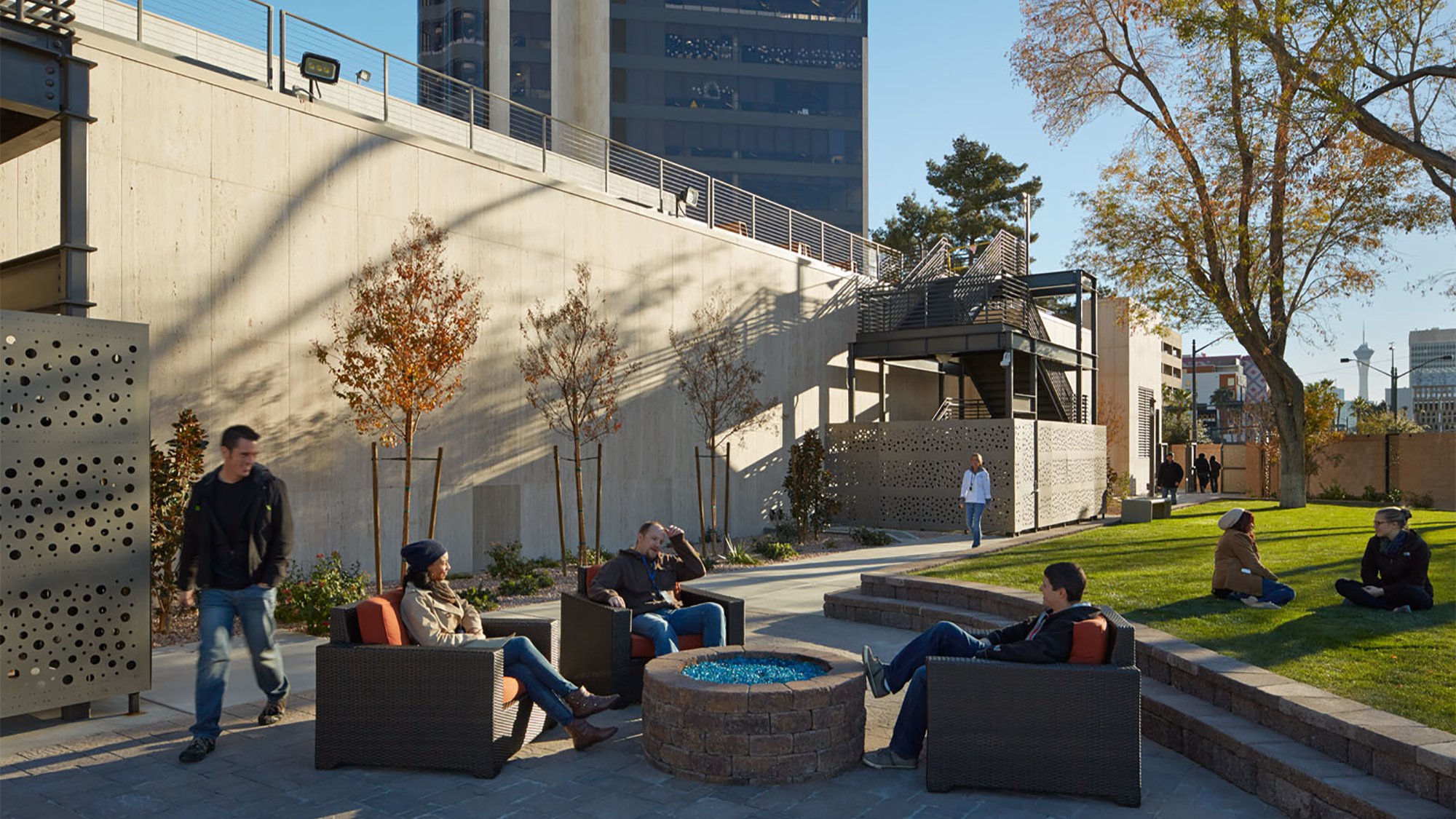 ;
;

